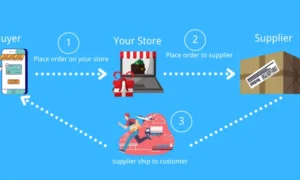Welcome to the era where speaking is not just a form of communication but a potent tool to navigate our digital realm. Gone are the days of being confined to typing and clicking as the sole means of interacting with technology. Today, we effortlessly converse with virtual assistants like Siri, Alexa, and Google Assistant, catalyzing a revolution in how we access information, control devices, and perform daily tasks. In this blog post, we will delve into the emergence of voice interfaces in the digital age and explore their potential to reshape our interaction with technology.
Introduction to Voice Interfaces
The surge in popularity of voice interfaces reflects our quest for more natural and efficient ways to interact with technology. Speaking-based interactions outpace typing or clicking in terms of speed and accuracy, especially when hands-free engagement is a priority.
Voice interfaces encompass a spectrum of technologies: speech recognition, voice synthesis, and voice biometrics. Speech recognition deciphers spoken language, voice synthesis generates speech, and voice biometrics identifies individuals based on distinct vocal traits. Collectively, these technologies offer developers a robust toolkit for crafting voice-driven applications.
Types of Voice Interfaces
A seismic shift in technology interaction is underway. Rather than relying solely on typing or clicking, more individuals are turning to voice interactions to control their devices. This trajectory is set to gain further momentum as voice interfaces evolve and achieve broader adoption.
Several types of voice interfaces are currently in use or development:
Voice assistants: These are the most recognizable voice interfaces, often found on smartphones. Siri (Apple devices) and Google Assistant (Android devices) exemplify voice assistants, capable of performing tasks such as calling, texting, and setting alarms.
Home assistants: Tailored for domestic use, home assistants like Amazon Alexa and Google Home facilitate control over smart home devices, playing music, answering queries, and more.
Automotive voice interfaces: Modern vehicles increasingly feature built-in voice interfaces, enabling drivers to manipulate various functions while keeping their hands on the wheel. Tasks like calling, climate control, and radio station selection are managed seamlessly.
Industrial voice interfaces: In industrial contexts, voice interfaces are gaining traction as well…
Benefits of Voice Interfaces
As the allure of voice interfaces grows, driven by the pursuit of more natural and efficient tech interactions, their advantages come to the fore:
Multitasking ease: Voice interfaces accommodate multitasking. Users can engage while cooking, driving, or undertaking other activities, unencumbered by the need to utilize hands or eyes.
Speed and efficiency: Voice commands, once acclimated to, expedite interactions compared to navigating menus and options manually.
Accuracy boost: Voice interfaces enhance accuracy. Users can articulate clearly and deliberately, facilitating better comprehension compared to typing or inputting extensive data.
Flexibility: Voice interfaces offer unparalleled flexibility. Unlike conventional interfaces constrained by predefined options, voice interfaces cater to diverse requests, fostering versatility.
Immersive experience: Employing voice interfaces renders interactions more immersive, engendering a sense of conversing with technology rather than navigating it.
Challenges with Voice Interfaces
Despite their merits, voice interfaces present certain challenges. Unlike typing or clicking, voice interactions lack visual feedback, complicating user awareness of successful input and available options. Noise interference is another issue, affecting the interface’s ability to comprehend users amidst ambient sounds. Voice interfaces mandate more engagement from users than conventional methods, rendering them less ideal for specific tasks. Their precision may lag behind other interfaces, potentially leading to errors.
Examples of Voice Interface Use Cases
The digital age ushers in a plethora of voice interface applications:
- Internet search: Voice search gains traction, especially when hands-free internet querying is preferred.
- Smart device control: Voice commands govern smart devices like thermostats and lights, enhancing convenience and accessibility.
- Hands-free information access: Voice interfaces deliver information without necessitating typing or clicking.
- Uninterrupted task completion: Voice interfaces enable task execution sans notifications, bolstering focus and productivity.
Security Concerns with Voice Interfaces
Voice interfaces come with security concerns. Continuous listening by the interface could surreptitiously record sensitive conversations, raising privacy apprehensions. Hackers might exploit vulnerabilities to access devices via voice interfaces, potentially wreaking havoc or pilfering sensitive data. Children’s accidental activations could lead to unintended purchases or exposure to inappropriate content. As voice interfaces gain traction, addressing these security issues is paramount.
The Future of Voice Interfaces
We stand on the brink of a digital era where voice interfaces will occupy a central role. Advances in Artificial Intelligence (AI) and Natural Language Processing (NLP) empower computers to comprehend and respond to human speech with growing precision.
In the foreseeable future, voice interfaces will dominate our interactions with digital devices and services. They’ll facilitate web searches, appointment scheduling, purchases, and more. As these interfaces fine-tune their grasp of our preferences, they’ll become indispensable in our lives.
Amazon is at the forefront of voice interface evolution with its Echo device, driven by Alexa Voice Service. Google, too, invests heavily in this realm via Google Home and Assistant.
It’s not just tech giants embracing voice interfaces; major enterprises also recognize their potential. IBM’s Watson, an AI platform, fuels applications like customer service chatbots. Microsoft integrates Cortana, its digital assistant, into businesses through Office 365.
Voice interfaces signify a paradigm shift in tech interaction. Typing and clicking no longer bind us; a voice-driven era is upon us.
Conclusion
Voice interfaces are poised to become a defining feature of the digital landscape. Their ability to expedite tasks, offer intuitive user experiences, and simplify intricate operations revolutionizes technology interaction. As we tread deeper into a digitized future, voice interfaces will likely saturate daily life further – brace yourself for `Alexa`, `Siri`, or `Cortana` enhancing your world.”


































